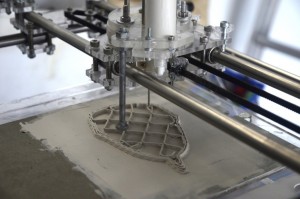
The world of manufacturing is changing very quickly thanks to the rapid growth of an amazing technology. As you may know, 3D printing uses a few specific technologies to actually print out an object using various media including spooled plastic filaments, powders, and resins. You may also encounter 3D printers which print using metal powder via a technology called DMP or direct metal printing. Printers which can use fabric, ceramic material, wood and even glass are being developed.
There are many 3D printers on the market geared to home, hobbyist, and small-to-medium sized businesses. You can also purchase one of these printers for $1,000 or less, and many are available for less than $500. With one of these printers, you could easily make a bride custom souvenir napkin rings for a rehearsal dinner. In addition, you might help someone remodeling a home make custom light switch covers and molding pieces. If you were a small clothing manufacturer, you might produce limited edition unique buttons, decorations, and other items using a 3D printer.
Prices for 3D printers are dropping quickly, and competition among various countries to get into the 3D printer market is currently vigorous. Many countries are focusing resources on creating 3D printer industries. In fact, there is least one industrial park in China devoted entirely to the production of 3D printers. You can purchase 3D printers made in various locations in both Western and Eastern Europe, North America, Australia and New Zealand, and throughout Asia.
SLS printing for high quality and volume plastic manufacturing
One technology for 3D printing, that has been around for a relatively long time, is SLS or Selective Laser Sintering. Like almost all 3D printing, SLS printing uses an additive manufacturing process. Material is applied layer by layer to build an object on a base. The printer is instructed via a system for three-dimensional rendering with a set of instructions that direct how the printer adds the layers to the object being formed. While SLS can use a powdered metal, in recent 3D printing history, it is usually a powdered plastic that is being applied. The role of the laser is to fuse the material together.
The quality of the printed object is the most important consideration in 3D printing, in addition to the modeling, which is controlled in part by how detailed the software used can be in representing the object on a kind of coordinate map. If you imagine a solid cube with every point in the cube having a unique address, and each address either having medium applied or being left blank, it becomes clear how the object is formed. The more points defined within the given space, the more precisely the shape of the object and its surface details will be. Another factor is the material used and how it is applied, with more and finer layers of the material forming the object resulting in a more detailed and higher quality product.

Other contemporary 3D printing methods
While all methods of 3D printing use some sort of additive manufacturing, the variation in quality of the different methods is noteworthy. Inexpensive 3D printers with FFF or fused filament fabrication technology generally have lower quality results. FFF is a much newer and far simpler technology than SLS and applies layers of melted plastic fiber through a nozzle. The layers of molten plastic applied by a nozzle cannot possibly have the same degree of fine definition as fine powder applied with a laser so FFF 3D printed objects will have a less polished looking finish. Furthermore, the edges of the object formed with fused filament fabrication are likely to need to be trimmed of excess plastic, that are likely to be visible as fine lines on the surface of the object produced by the 3D printer.
Relative costs of 3D printing methods
At this time, you can purchase an SLS printer for industrial use range from around one hundred thousand dollars to over a million dollars. As of early 2015 some SLS printers are expected on the market for as little as $5,000 though how well they perform. Printers using FFF technology are not developed for mass production, but few of these printers are over $5,000 and a wide range are available for less than $1,000.
In addition to the initial cost for the 3D printer, there are costs for the filament, powder, or resin used in printing. Costs per object will vary by how much material is needed, the sort of medium your printer requires, and how much of the medium is wasted in the printing process.
One other consideration is whether a printer comes fully assembled or DIY (do it yourself) as a kit. When printers are pre-assembled, you may have fewer options in setting your printer up. It will operate in the way the manufacturer believes is most helpful to an average end user. DIY printers save may get you more printer for your money but if you need to hire someone to put it together and get it running, you may find you do not really save any money on the 3D printer purchase. The advantages of a DIY printer may include more flexibility in setting up features of the printing process.
As 3D printers become lower in price and more sophisticated in function, they are likely to become essential for certain kinds of businesses, and more popular with users who get into 3D printing as a hobby. When purchasing a 3D printer, consider the availability of print medium, the minimum quantity of the medium you would have to purchase, and whether or not the 3D printer is available when ordered. This way, you can make the most of your 3D printer.
This article was syndicated from Business 2 Community: Manufacturing And 3D Printing
More Technology & Innovation articles from Business 2 Community:




